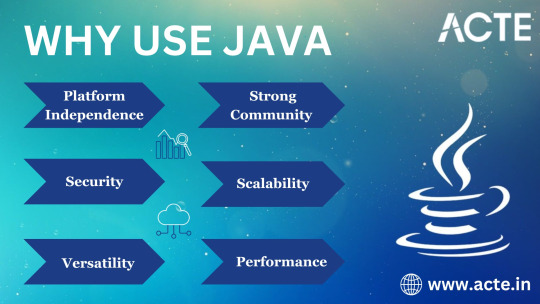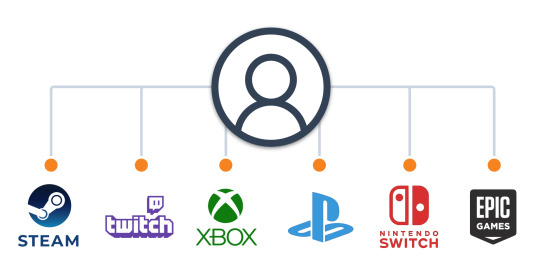#Mobile Ecosystem Forum
Explore tagged Tumblr posts
Text
Latino Twitter/X Is Here to Stay. Oyes!
Latino Twitter/X is a dynamic and influential space on the social media platform that has transformed how the Latino community communicates, organizes, and expresses its cultural identity. Over the years, this digital ecosystem has emerged as an essential forum for dialogue on social, political, and cultural issues uniquely relevant to Latinos. It serves as a vibrant meeting point where voices across diverse backgrounds converge to discuss challenges, celebrate achievements, and advocate for change.
One of the most significant aspects of Latino Twitter/X is its role in political mobilization and social activism. With the power of hashtags and trending topics, users amplify voices that are often marginalized in mainstream media. Movements addressing immigration reform, social justice, and economic equality gain momentum on this platform, enabling rapid dissemination of information and coordinated action. This immediacy and connectivity empower individuals to rally around common causes and build a collective identity that spans geographic borders and generations.
In addition to its political impact, Latino Twitter plays a vital role in cultural expression and preservation. It provides a space for sharing music, art, literature, and personal narratives that enrich the cultural tapestry of the community. Through humor, poignant commentary, and storytelling, users forge connections that transcend socio-economic barriers and geographic distances. This cultural exchange not only reinforces a sense of pride in Latino heritage but also challenges stereotypes by showcasing the community’s diversity and resilience.
Ultimately, Latino Twitter is much more than a social media trend, it is a powerful tool for community building and social change. By giving voice to experiences that might otherwise remain unheard, it helps shape public discourse, influence policy debates, and foster a more inclusive society. In a world where digital conversations often set the agenda, the importance of Latino Twitter continues to grow, reflecting and driving the evolving narrative of the Latino community.
2 notes
·
View notes
Note
ahhhh sorry cielo, i don't usually share obsidian files for editing/commenting so i'm not sure, but i found this plugin (link leads to a forum post) that looks like it'd work for that purpose?? i can definitely test it out first and report back! obsidian absolutely takes some tinkering to get used to, but it's really customizable! i'll include the plugins i use if that helps at all! everything is saved in markdown which makes it easy for me to post to tumblr in web (um. not in the tumblr app tho. some coding issue).

but i also just remembered that notion might be another one to consider — it's pretty user friendly, has mobile and web, uhh i think plans now are free if you're using it just for yourself (student discount is a "plus plan" that lets you have teams? full disclosure i also haven't attempted that). i used to use notion for planning but never really got into it for writing for some reason, and then they started pushing their AI and i switched to obsidian
i am sorry 😔 i know when i started looking for something other than the google ecosystem it took me a while to figure out what i wanted/needed, and then it took me a bit longer to get used to obsidian, but i hope your search goes a lot easier!
hello friend!!
pls do not apologize!! i really appreciate you taking the time to answer so thoughtfully 😭💗
i was defs messing around with plugins!! i got a comment one that should be more helpful? and ill defs check out the other plugin you mentioned—it looks promising!! defs something more toward what i’m looking for!!
defs can tell obsidian is pretty customizable! which is really cool! seems like a sandbox and you just gotta figure out how to tell it to do what you’d like!
thank you for sharing your plugins!! i’ll have to get those ones as well!!
and i do use notion actually but not for long form writing! i use it for storyboarding + plot info + character building, etc.! i have a very beautiful notion set up for a long-form high fantasy original story of mine! i am very proud of it!
again, pls don’t apologize!! i am defs going through this journey right now and i will figure it out! i am starting to get the hang of obsidian too! some more tinkering will help!
thank you again for the recommendation and for your insight!! it’s greatly appreciated!!! 💗💗
hope you’re doing well!!
2 notes
·
View notes
Text
From 'Write Once, Run Anywhere' to Strong Security: The Java Advantage
Java, a programming language and technology ecosystem, has solidified its place in the digital world as a versatile and powerful tool. With its "Write Once, Run Anywhere" capability and an extensive array of features, Java has been instrumental in diverse domains, from mobile app development to building enterprise-level systems. This blog explores the strengths of Java, including its portability, robustness, vast ecosystem, and the thriving community that supports it. We will also discuss the value of structured training and the role of ACTE Technologies in nurturing your Java skills. By the end of this journey, you'll have a deep appreciation for the enduring excellence of Java and its role in the ever-evolving tech industry.

The Power and Versatility of Java:
1. Portability and Cross-Platform Compatibility:
Java's claim to fame, "Write Once, Run Anywhere," is not just a marketing slogan. It's a fundamental principle of Java that sets it apart. This feature is made possible by the Java Virtual Machine (JVM), which allows Java code to run on any platform that has a compatible JVM. This portability has been a game-changer, especially in a world where a diverse range of devices and operating systems coexist. Whether it's Windows, macOS, or Linux, Java applications run seamlessly, eliminating compatibility issues and reducing development time and effort.
2. Robust and Secure:
Java's architecture prioritizes robustness and security. It employs strong type checking, automatic memory management (garbage collection), and comprehensive exception handling. These features make Java code less prone to common programming errors and vulnerabilities. For businesses and organizations where system reliability and data security are critical, Java's robustness and built-in security mechanisms make it a go-to choice. Critical systems, such as banking applications, rely on Java to ensure the highest level of protection against errors and threats.
3. Vast Ecosystem:
The Java ecosystem is vast and varied. It includes an extensive library of classes, frameworks, and tools that cater to a wide range of application development needs. Some of the notable components of this ecosystem include:
Java Standard Library: Java's standard library provides a wealth of pre-built classes and utilities for common programming tasks, simplifying development.
Enterprise JavaBeans (EJB): For enterprise-level applications, EJB offers a framework for building scalable, distributed, and transactional components.
JavaServer Pages (JSP) and Servlets: These technologies enable the development of dynamic web applications, making Java a popular choice for web development.
Spring Framework: Spring is a comprehensive framework for building enterprise-level applications, offering features like dependency injection, aspect-oriented programming, and more.
Android Development: Java serves as the primary language for developing Android mobile applications, further expanding its reach.
4. Community and Support:
Java's success is not only due to its technical prowess but also its thriving community of developers, enthusiasts, and experts. This community-driven approach ensures that Java remains relevant, up-to-date, and aligned with industry best practices. Developers can find a wealth of resources, forums, and collaborative environments where they can learn, share knowledge, and solve challenges. The community's collective wisdom and problem-solving spirit have contributed to the continuous evolution of Java.

Java's enduring excellence is a testament to its portability, robustness, vast ecosystem, and strong community support. If you're looking to harness the potential of Java and embark on a journey of learning and mastery, consider exploring the Java training programs offered by ACTE Technologies. With dedication and the right resources, you can leverage Java's capabilities and contribute to the ever-evolving tech landscape.
Java has stood the test of time, offering unparalleled portability, robustness, a rich ecosystem, and a vibrant community. Whether you're building enterprise-level applications or dynamic web services, Java remains a reliable choice. ACTE Technologies' structured training can help you unlock the full potential of Java, enabling you to thrive in the dynamic tech industry.
8 notes
·
View notes
Text
A Comprehensive Exploration of Selenium: A Double-Edged Sword in Software Testing
In the ever-evolving realm of software testing, Selenium has emerged as a dual-faced protagonist, offering a spectrum of advantages while presenting unique challenges. This blog takes a deep dive into the intricacies of Selenium, shedding light on both its strengths and potential pitfalls.

Unveiling Selenium's Strengths
Advantages:
Embrace Open-Source Freedom: Selenium's open-source nature liberates users from licensing constraints, fostering a community-driven ecosystem with widespread adoption and support.
Cross-Browser Harmony: Selenium's commendable support for major browsers ensures comprehensive testing, guaranteeing a seamless user experience across diverse platforms.
Multi-Language Versatility: The support for multiple programming languages allows testers to choose their preferred language, enhancing flexibility and catering to diverse project requirements.
Platform-Independent Prowess: Selenium's platform independence enables the creation of test scripts on one operating system and their seamless execution across different platforms, a testament to its adaptability.
Harmony with Testing Frameworks: Selenium's seamless integration with popular testing frameworks fosters structured and modular test script development, promoting organization and ease of maintenance.
Thriving Community Support: A robust community of developers and testers ensures a constant flow of resources, forums, and plugins, enriching the overall Selenium experience.
Parallel Execution Efficiency: Selenium's ability to execute test scripts in parallel is a time-saving feature, particularly valuable for large test suites and resource optimization.
Mobile Testing Proficiency: Beyond web applications, Selenium extends its support to mobile application testing through frameworks like Appium, making it a versatile choice for organizations engaging in both web and mobile development.

Navigating Selenium's Challenges
Disadvantages:
Navigating Windows Application Limits: Selenium's primary focus on web applications can be limiting for organizations heavily reliant on Windows-based applications.
Mastering the Learning Curve: Selenium demands a certain level of programming proficiency, potentially posing a challenge for individuals with limited coding experience.
Reporting Complexities: The absence of built-in reporting capabilities requires users to rely on third-party tools or custom frameworks, introducing an additional layer of complexity.
Visual Validation Hurdles: The lack of support for image-based testing may limit Selenium's application in scenarios where visual validation is paramount.
Captcha and Barcode Testing Constraints: Selenium faces challenges automating tests involving Captcha or barcode reading, potentially requiring human intervention.
Browser Version Sensitivity: Selenium WebDriver's dependency on browser versions introduces the risk of compatibility issues with script updates or changes in browser versions.
Mobile Testing Setup Complexity: Configuring Selenium for mobile testing across various platforms and devices can be intricate, necessitating additional tools and configurations.
Data Management Challenges: The absence of built-in test data management requires testers to handle data input and output through coding or external data sources.
Striking a Balance with Selenium
In summary, Selenium stands as a dynamic force in software testing, offering a range of advantages coupled with distinctive challenges. Achieving optimal results with Selenium requires a strategic approach, acknowledging both its strengths and limitations. Whether maximizing open-source freedom or addressing mobile testing complexities, organizations can leverage comprehensive training programs to harness Selenium's full potential.
As the software testing landscape evolves, Selenium remains a potent tool, demanding a nuanced understanding to navigate its complexities effectively. This exploration showcases Selenium as a double-edged sword, urging testers and developers to strike a delicate balance for a robust and efficient testing strategy.
2 notes
·
View notes
Text
Exploring the Key Benefits of iPhone App Development and Its Impact in Kerala

In the ever-evolving landscape of mobile technology, iPhone app development has emerged as a pivotal element for businesses and individuals looking to capitalize on the popularity of Apple devices. The seamless integration of hardware and software in iPhones provides a unique platform for creating innovative and user-friendly applications. This article explores the key benefits of iPhone app development and delves into its impact in Kerala, a region known for its burgeoning tech ecosystem.
Global Market Reach
One of the primary advantages of investing in iPhone app development is the global market reach that Apple devices offer. With millions of iPhone users worldwide, developing an app for the iOS platform ensures exposure to a vast and diverse audience. This global presence allows businesses, including those in Kerala, to extend their reach and tap into international markets, expanding their user base and potential customer pool.
High-Quality User Experience
Apple is renowned for its commitment to delivering a superior user experience, and this ethos extends to the apps available on the App Store. iPhone app development allows for the creation of applications that seamlessly integrate with the iOS ecosystem, providing users with a consistent and intuitive experience. The strict App Store guidelines ensure that only high-quality, well-designed apps make it to the platform, contributing to a positive user perception and engagement.
Security and Privacy Standards
Security is a top priority for Apple, and this commitment to user privacy and data protection is a significant benefit for both developers and users. The iOS platform incorporates robust security features, including app sandboxing, secure payments through Apple Pay, and stringent app review processes. This not only instills confidence in users but also makes iPhone app development an attractive choice for businesses, especially in regions like Kerala where data protection is increasingly prioritized.
Monetization Opportunities
The App Store provides lucrative monetization opportunities for developers. With a well-designed and valuable app, developers can explore various revenue streams, including paid downloads, in-app purchases, and subscriptions. The App Store's credibility and the willingness of iOS users to pay for quality content or features make iPhone app development a viable avenue for generating revenue. This is particularly relevant for businesses and developers in Kerala seeking sustainable income streams.
Optimized Performance Across Devices
Apple's closed ecosystem allows developers to create apps optimized for a limited range of devices, ensuring consistent performance across iPhones and iPads. This streamlined development process facilitates the creation of applications that take full advantage of the hardware capabilities of Apple devices. Optimized performance leads to faster load times, smoother user interactions, and an overall enhanced user experience, reinforcing the appeal of iPhone app development.
Access to Advanced Technologies
Apple regularly introduces cutting-edge technologies and features in its devices, and iPhone app development allows developers to leverage these innovations. From augmented reality (AR) capabilities to integration with wearable devices like the Apple Watch, developers in Kerala can explore and incorporate the latest technologies to create innovative and feature-rich applications. Staying abreast of technological advancements enhances the competitiveness of iPhone apps in the market.
Strong Developer Support
Apple provides extensive support and resources for developers, making the app development process smoother and more efficient. The iOS Software Development Kit (SDK) includes a range of tools, frameworks, and APIs that simplify the development of feature-rich applications. The comprehensive documentation, developer forums, and regular updates ensure that developers, including those in Kerala, have access to the necessary resources to create high-quality iPhone apps.
Brand Credibility and Visibility
Publishing an app on the App Store adds a layer of credibility to a brand or business. Users often associate the Apple App Store with quality and reliability, and having an app featured on this platform can enhance the overall perception of a brand. The visibility gained through the App Store's curated content and featured sections can significantly boost the discoverability of apps developed by businesses in Kerala, helping them stand out in a competitive market.
Ease of Integration with Other Apple Devices
iphone app development kerala extends beyond smartphones, as apps can seamlessly integrate with other Apple devices such as iPads, Macs, and Apple Watches. This interconnected ecosystem allows users to enjoy a cohesive experience across their Apple devices. Businesses and developers in Kerala can capitalize on this synergy by creating apps that provide a seamless and integrated experience, catering to users who embrace multiple Apple products.
Community and Networking Opportunities
Engaging in iPhone app development opens doors to a vibrant community of iOS developers and enthusiasts. Participating in Apple Developer conferences, online forums, and local meetups provides networking opportunities and access to valuable insights. Developers in Kerala can benefit from this sense of community, gaining inspiration, collaboration opportunities, and staying updated on the latest trends and best practices in the iOS development ecosystem.
Impact of iPhone App Development in Kerala
Kerala, known for its robust IT infrastructure and a growing tech-savvy population, is witnessing the positive impact of iPhone app development. Businesses in the region are recognizing the potential of reaching a global audience through the App Store. Moreover, as data privacy and security become paramount concerns, the reputation of the iOS platform for prioritizing these aspects aligns with the preferences of users in Kerala.
The state's emphasis on education and technology literacy also contributes to the demand for iPhone app development skills. Educational institutions and training centers in Kerala are increasingly offering courses and programs focused on iOS app development, nurturing a pool of talented developers ready to contribute to the thriving tech ecosystem.
Conclusion
In conclusion, the benefits of iPhone app development extend far beyond the technical realm, encompassing global market reach, user experience, security, and monetization opportunities. For businesses and developers in Kerala, embracing iPhone app development opens avenues for growth, innovation, and global visibility. The unique features of the iOS platform, coupled with the region's tech-friendly environment, position iPhone app development as a strategic investment for those seeking to make a mark in the dynamic world of mobile applications.
2 notes
·
View notes
Text
What is WordPress? - 8 Benefits of Using WordPress
WordPress is a popular and versatile content management system (CMS) that powers millions of websites worldwide. Originally developed as a blogging platform, it has evolved into a robust CMS that allows users to create and manage various types of websites, from simple blogs to complex e-commerce stores.

Here are eight benefits of using WordPress for your website:
User-Friendly Interface: One of the key advantages of WordPress is its user-friendly interface. You don't need to have advanced technical skills or coding knowledge to create and manage a website on WordPress. Its intuitive dashboard and simple navigation make it accessible to beginners, enabling them to add and edit content easily.
Flexible and Customizable: WordPress offers a wide range of themes and templates that allow you to customize the appearance of your website according to your preferences. You can choose from thousands of free and premium themes, or even create your own design using custom coding. Additionally, plugins extend the functionality of WordPress, enabling you to add features such as contact forms, social media integration, SEO optimization, and more, without any coding skills.
SEO-Friendly: Search engine optimization (SEO) is crucial for driving organic traffic to your website. WordPress is inherently SEO-friendly, thanks to its clean code and semantic markup. It also provides several SEO plugins, such as Yoast SEO and All in One SEO Pack, which help optimize your content and meta tags, generate XML sitemaps, and improve your website's visibility in search engine rankings.
Responsive Design: With the increasing use of mobile devices, having a responsive website design is essential. WordPress offers a wide array of responsive themes that automatically adjust the layout and design to fit various screen sizes, ensuring a seamless user experience across devices. This helps improve user engagement and reduces bounce rates.
Scalability and Extensibility: Whether you have a small blog or a large e-commerce website, WordPress can handle it all. It is highly scalable and can accommodate your growing needs as your website expands. With its vast plugin ecosystem, you can easily add new features and functionality to your website without requiring extensive development work. This flexibility makes WordPress suitable for businesses of all sizes.
Robust Community and Support: WordPress has a thriving community of developers, designers, and users who contribute to its growth and provide support. You can find extensive documentation, tutorials, forums, and communities where you can seek assistance or share knowledge. This active community ensures that WordPress remains up to date, secure, and constantly evolving.
Integration and Compatibility: WordPress seamlessly integrates with various third-party services and tools, making it easy to connect your website with popular platforms such as social media, email marketing services, payment gateways, and more. This allows you to streamline your workflow and enhance the functionality of your website by integrating with the tools you already use.
Cost-Effective Solution: WordPress is an affordable solution for building and managing your website. The core WordPress software is free to use, and there are plenty of free themes and plugins available. While premium themes and plugins may require a financial investment, they often provide additional features and support. Additionally, as WordPress is open-source, you have full control over your website and can host it on a platform of your choice, reducing ongoing maintenance costs.

Conclusion
In conclusion, WordPress offers a user-friendly and versatile platform for creating and managing websites. Its flexibility, customization options, SEO-friendliness, and strong community support make it an ideal choice for individuals, bloggers, small businesses, and
2 notes
·
View notes
Text
Opening Salaries: The Starting Pay for Phlebotomists in 2023
Unlocking Salaries: the Starting Pay for Phlebotomists in 2023
as the healthcare industry continues to expand, the demand for phlebotomists is on the rise. If you’re considering a career in this vital field, understanding starting salaries for phlebotomists in 2023 is crucial for making informed career decisions.In this comprehensive guide, we’ll delve into the latest trends in phlebotomy salaries, their importance in the healthcare system, and tips to maximize your earning potential.
The Current Landscape of Phlebotomy Salaries
Phlebotomists play a critical role in the healthcare ecosystem by collecting blood samples for various tests. According to the U.S. bureau of Labor Statistics (BLS), the median annual salary for phlebotomists in 2023 is approximately $37,000, translating to around $17.80 per hour.
Factors Influencing Starting Pay
Several factors can influence the starting salary for phlebotomists, including:
Location: salaries vary significantly based on geographic location. Urban areas frequently enough pay more than rural ones due to the higher cost of living.
Experience: Entry-level positions may garner lower starting pay, but experience leads to higher earning potential over time.
Certification: Certified phlebotomists typically earn more than those without certification.
Employer Type: Phlebotomists can work in hospitals, clinics, blood banks, and laboratories, each with different pay scales.
Phlebotomy Salary Breakdown
To provide greater insight into the variability in salaries, hear is a breakdown of average starting salaries by state in 2023:
State
Average Starting Salary
California
$42,000
Texas
$35,000
New York
$40,000
Florida
$36,000
Ohio
$34,000
Benefits of Becoming a Phlebotomist
Beyond just salary, there are several benefits to pursuing a career in phlebotomy:
Job Stability: The healthcare field is constantly evolving, ensuring a steady demand for skilled phlebotomists.
Fast Entry: Phlebotomy training programs are short, frequently enough lasting less than a year, allowing aspiring professionals to start working sooner.
Flexible Hours: Many phlebotomists enjoy flexible hours,especially if they work for clinics or mobile blood donation units.
Opportunities for Advancement: Those interested in further education can progress into roles like medical lab technicians or laboratory managers.
Practical Tips for Aspiring Phlebotomists
If you’re looking to get started in the field of phlebotomy,here are some tips to help you on your journey:
Get Certified: Consider obtaining certification from a recognized body,such as the American society for Clinical Pathology (ASCP),to enhance your job prospects.
Network: Join professional organizations and attend industry events to meet other professionals and learn about job openings.
Consider Internships: Gain practical experience through internships or volunteer opportunities in hospitals or clinics.
Stay Informed: Keep updated on industry trends and salary advancements by following relevant blogs, news articles, and forums.
Case Studies: Real-Life Earnings
Let’s examine some real-life examples to get a better understanding of what to expect when entering this field:
Case Study 1: Mary, a Newly Certified Phlebotomist
Mary graduated from her phlebotomy training program in early 2023 and immediatly started working at a community clinic in California. With her certification, she landed a starting salary of $42,000 annually. Within six months, due to her dedication and ability to build rapport with patients, she received a 10% pay raise and started taking on additional responsibilities.
Case Study 2: John, Experienced Phlebotomist in New York
John has worked as a phlebotomist for five years, primarily in a hospital setting.In 2023, he earned an annual salary of $50,000. John’s expertise and ability to train new phlebotomists played a notable role in his earning potential, as experienced personnel are highly valued in the field.
First-Hand Experience: Insights from Phlebotomists
To further enhance this guide, we asked several phlebotomists about their experiences and salaries:
Alicia: “I started at $36,000 and have enjoyed steady growth. I love the patient interactions.”
Ron: “Working in a big city means higher pay, but my hours can get hectic.”
Sharon: “Once I pursued my certification, I saw a big increase in job offers!”
Wrapping Up: The Future of Phlebotomy
As we move deeper into 2023, the demand for skilled phlebotomists is expected to keep growing. With an average starting salary between $34,000 to $42,000 depending on location and qualifications, this profession offers a solid opportunity for new entrants into the healthcare field. Remember to leverage certifications and networking opportunities to maximize your earnings in this rewarding career.
Whether you’re just considering becoming a phlebotomist or are already on your path, understanding salary expectations and career potential will help you make the most appropriate decisions for your future in healthcare.
youtube
https://phlebotomytrainingcenter.net/opening-salaries-the-starting-pay-for-phlebotomists-in-2023/
0 notes
Text
Corporate Learning Services: Empowering Business Through Strategic Learning
Corporate Learning Services: Empowering Business Through Strategic Learning
Unlocking Workforce Potential with Scalable Learning Solutions
In today’s fast-evolving business environment, where digital disruption, hybrid workforces, and skill shortages are reshaping the corporate landscape, corporate learning services have emerged as a strategic imperative for organizations. No longer confined to the realm of traditional training modules, these services now encompass holistic solutions aimed at aligning workforce capabilities with business objectives.
Learning and Development (L&D) leaders are increasingly turning to corporate learning services to not only upskill their talent pools but also to foster innovation, increase employee engagement, and drive organizational agility. This article explores what corporate learning services entail, why they are essential, and how they can be leveraged to drive sustained business impact.

What Are Corporate Learning Services?
Corporate learning services refer to a broad spectrum of managed learning solutions provided by internal teams or external vendors to design, develop, deploy, and measure employee training and development programs. These services typically include:
Learning strategy and consulting
Custom content development
Curriculum and instructional design
Learning management system (LMS) administration
Training delivery (instructor-led, virtual, hybrid)
Learning analytics and performance measurement
Learning technologies integration
In essence, corporate learning services aim to create an ecosystem that supports continuous learning, upskilling, and reskilling across the organization.
Why Are Corporate Learning Services Essential Today?
The need for corporate learning services is more pressing than ever. The Fourth Industrial Revolution has catalyzed a massive shift in job roles and skills demand. According to the World Economic Forum’s Future of Jobs Report 2023, 44% of workers' core skills will change within the next five years, and 6 in 10 workers will require training before 2027.
Yet, many organizations lack the in-house expertise, bandwidth, or infrastructure to meet these training demands at scale and speed. That’s where corporate learning services come in—enabling businesses to:
Stay competitive in volatile markets
Build agile learning cultures
Reduce time-to-competency for new hires
Improve retention through career development opportunities
Align training outcomes with measurable business results
A study by LinkedIn Learning (2024) found that 83% of organizations agree that closing skill gaps in their workforce is a top priority. However, only 15% of L&D teams feel adequately prepared to address these gaps without external support.
Key Components of an Effective Corporate Learning Service Strategy
To truly deliver value, corporate learning services must go beyond content delivery and focus on end-to-end learning lifecycle management. Here are the core components:
1. Strategic Learning Needs Analysis
Every effective learning program begins with identifying organizational needs. Corporate learning services providers use performance consulting methodologies to analyze competency gaps, define learning objectives, and align them with key business KPIs.
2. Customized Content Development
Off-the-shelf training doesn’t always cut it. Custom learning experiences—tailored to industry, roles, and organizational culture—drive greater engagement and knowledge retention. Services often include microlearning, gamification, simulation-based learning, and scenario-based modules.
3. Multi-Modal Delivery Options
The modern learner expects flexibility. Blended learning approaches—combining in-person sessions, virtual classrooms, eLearning modules, and mobile learning—ensure accessibility and scalability.
4. Learning Technology Enablement
Integrating tools like LMS, LXP (Learning Experience Platform), AI-driven assessments, and content curation engines allows for seamless learner journeys and automated reporting.
5. Data-Driven Insights and Reporting
One of the defining advantages of modern corporate learning services is the ability to measure learning effectiveness through analytics. Metrics such as course completion rates, learner engagement, knowledge transfer, and performance improvement feed into continuous optimization.
Benefits of Outsourcing Corporate Learning Services
While some enterprises build internal learning capabilities, many L&D leaders partner with learning service providers to scale their programs. Here are key benefits of outsourcing:
Cost-efficiency: Reduce overhead costs associated with training teams, tools, and infrastructure.
Scalability: Rapidly launch or expand training programs across departments or geographies.
Expertise Access: Leverage instructional designers, learning strategists, and technologists.
Faster Deployment: Accelerate time-to-market for training rollouts.
Focus on Core Business: Allow internal teams to focus on strategic goals rather than administrative tasks.
According to a Brandon Hall Group study (2023), companies that outsource corporate learning services are 35% more likely to report improved business performance from learning initiatives.
Trends Reshaping Corporate Learning Services in 2025
As the workplace continues to evolve, so do expectations from corporate learning solutions. L&D professionals must stay ahead of the curve by integrating the following trends:
AI and Personalization
Artificial Intelligence enables hyper-personalized learning paths, content recommendations, and smart assessments—improving learning relevance and learner satisfaction.
Microlearning and Just-in-Time Learning
Short, focused modules support busy professionals and encourage knowledge reinforcement at the moment of need.
Learning in the Flow of Work
Seamlessly embedding learning into platforms like Microsoft Teams, Slack, or Salesforce ensures minimal disruption and increased learning adoption.
Immersive Learning (AR/VR)
Simulated environments are being used for safety training, sales enablement, and leadership development—providing experiential learning at scale.
Skills-Based Learning Architecture
Rather than focusing on roles, many companies are redesigning learning programs based on skill adjacencies and future readiness.
Case in Point: How Corporate Learning Services Transformed a Global Retail Brand
A multinational retail corporation faced declining employee engagement and inconsistent onboarding across 20 countries. By partnering with a leading corporate learning services provider, the company implemented a unified digital learning platform, customized onboarding journeys, and mobile learning options for frontline workers.
Results:
56% reduction in onboarding time
38% increase in training completion rates
25% improvement in employee engagement metrics
2x increase in internal promotion rates within 18 months
This real-world example underscores how corporate learning services can drive strategic outcomes when aligned with organizational goals.
Final Thoughts
In an age where talent is the ultimate differentiator, corporate learning services have evolved from a functional necessity to a competitive advantage. For L&D professionals, this means reimagining learning not just as a support function, but as a catalyst for growth, innovation, and transformation.
By embracing the full potential of corporate learning services, organizations can future-proof their workforce, enhance employee experiences, and deliver measurable business value in a volatile economy.
As the pace of change accelerates, those who invest in continuous learning infrastructure will emerge stronger, more resilient, and better equipped to lead their industries forward.
Quick Takeaway: Investing in corporate learning services is no longer optional—it's a strategic imperative. With skills gaps widening and workforce expectations shifting, only those organizations that embed continuous learning into their DNA will thrive in the future of work.
0 notes
Text

The Hong Kong Special Administrative Region is uniquely positioned to harness its competitive advantages to empower global technological advancement and innovation, as it prepares to host a high-end innovation and technology forum,
Details of the upcoming International Science, Technology and Innovation Forum, scheduled for June 6–7 in Hong Kong, were unveiled on Wednesday during a new conference at the ongoing Boao Forum for Asia Annual Conference 2025.
Zafar Uddin Mahmood, policy advisor to the secretary-general of the BFA, described the event as one of the BFA’s important thematic subforums that complements its annual main conference. Mahmood previously served as the special envoy for the China-Pakistan Economic Corridor.
This year’s subforum, themed “Technology Leads the Future, Innovation Drives Transformation”, is expected to attract around 800 top-notch experts, scholars, officials, and business leaders. It will feature an opening ceremony, a Hong Kong forum, panel discussions and roundtable sessions.
Attendees will engage in in-depth discussions on a wide range of topics, including the global innovation ecosystem, global technology governance, technological innovation, and the upgrading of industrial chains under new quality productive forces. The event will also explore cutting-edge fields such as life sciences, artificial intelligence (AI), future mobility, and quantum technology.
This marks the fourth iteration of the science-and-innovation-focused subevent, following successful editions hosted by other cities in the Guangdong-Hong Kong-Macao Greater Bay Area — Macao in 2020, Guangzhou in 2022, and Zhuhai in 2023.
Leong Vai-tac, the subforum’s executive chairman, highlighted the subforum’s focus on the latest global technology growth, future trends and opportunities, and the potential risks within.
Leong, who is also former secretary for economy and finance of the Macao SAR government, added that the upcoming event will explore ways to strengthen global governance in science and technology, bridge the digital divide, and enhance international cooperation, paving the way to support the implementation of the United Nations 2030 Sustainable Development Goals.
Sun Dong, secretary for innovation, technology and industry of the Hong Kong SAR government, said that the subforum serves as a high-level international platform for collaboration and exchanges. The Hong Kong event, jointly hosted by the Hong Kong SAR government and the BFA, highlights the event’s Greater Bay Area characteristics while affirming Hong Kong’s strengths as a highly internationalized hub, Sun added.
During the subforum, Hong Kong will fully leverage its roles as a superconnector and super value-adder to create high-quality international synergies, Sun said.
He expected to partner with the BFA to deliver a successful international event, injecting new momentum into innovation and technology development for both the nation and the world.
Sun added that the SAR government has identified AI as a strategic priority, recognizing its reshaping effect on the global economic landscape. The city has promoted the "AI+" initiative to drive innovation and empower various industries. Notably, the first-phase facilities of the AI super-computing center at Hong Kong's Cyberport became operational late last year, providing enterprises with critical computing power, Sun said.
With unwavering determination to realize Hong Kong's vision of becoming an international innovation and technology hub, and with the strong support of the central government, Hong Kong is actively fostering a vibrant innovation and technology ecosystem and developing a new real economy that capitalizes on its unique advantages, Sun said.
Sun also called on global enterprises to come and invest in Hong Kong, and to make use of the city’s unique position as a financial center.
Source:China Daily
0 notes
Text
Viktorija Radman Appointed Mobile Ecosystem Forum Board Member
Infobip Advancing Women’s Representation. Global cloud communications platform Infobip celebrates International Women’s Month with the appointment of Viktorija Radman to the Board of the Mobile Ecosystem Forum (MEF). Her election at the MEF Global Forum Conference in Barcelona last week highlights Viktorija’s leadership in driving transformation at Infobip while fostering collaboration in the…
0 notes
Text
Why Java Still Reigns Supreme: A Deep Dive into Its Benefits
In the ever-evolving world of software development, choosing the right programming language can be a critical decision. Java is one language that has over the years continuously demonstrated its value. With a rich history and a thriving ecosystem, Java remains a top choice for developers of all levels of expertise.

In this blog post, we will delve into the reasons why you should consider using Java in your development projects, exploring its strengths, versatility, and the many advantages it offers.
1. Platform Independence: "Write Once, Run Anywhere"
One of Java's defining features is its remarkable platform independence. This characteristic is often encapsulated in the phrase "Write Once, Run Anywhere." What does this mean for developers? It means that Java applications can run on any platform that has a compatible Java Virtual Machine (JVM). Whether you're targeting Windows, macOS, Linux, or even mobile devices, Java provides consistent and reliable performance across different environments.
The beauty of this platform’s independence lies in its ability to save developers time and effort. Instead of writing separate code for each operating system or device, you can write your code once and deploy it everywhere. This significantly streamlines the development process and reduces the complexity of managing multiple codebases.
2. Strong Community and Ecosystem
Java boasts one of the most extensive and active developer communities in the world. This vibrant ecosystem is a testament to Java's popularity and longevity. It provides developers with a wealth of resources, including documentation, libraries, and frameworks. Whether you're a beginner or an experienced professional, you'll find that Java's community is both welcoming and supportive.
If you encounter challenges or need guidance, you can turn to the Java community for help. Online forums, discussion groups, and social media platforms are teeming with developers eager to share their knowledge and assist others. The wealth of resources and the willingness of the community to help are invaluable assets when working with Java.
3. Security: Prioritizing Safety
Security is a paramount concern in today's digital landscape, and Java takes this concern seriously. The language and its runtime environment include built-in security features designed to protect applications from common vulnerabilities. These features, combined with Java's strict type system and memory management, contribute to creating robust and secure applications.
Additionally, Java regularly receives updates and patches to address emerging security threats. Staying up-to-date with these updates is crucial for keeping your Java applications secure. The commitment to security makes Java an excellent choice for projects that handle sensitive data or require a high level of protection against cyber threats.
4. Scalability: From Small-Scale to Enterprise
Java's scalability is another compelling reason why developers choose this language. It excels in both small-scale and large-scale applications. Whether you're building a lightweight web app or a complex enterprise-level system, Java can handle the job with finesse.
For enterprise-level applications that demand reliability and performance, Java's robustness is particularly advantageous. It can effortlessly handle high loads and traffic, making it a trusted choice for businesses with critical software needs. The ability to scale up or down as needed ensures that Java remains a versatile tool for a wide range of projects.
5. Versatility: More Than Just Coffee
Java's versatility sets it apart from many other programming languages. While some languages are specialized for specific types of applications, Java can do it all. It's equally suitable for web development, mobile app development, desktop applications, and backend services. This adaptability is invaluable in today's multi-platform development landscape, where projects often require a mix of technologies.
Whether you're building a responsive web application using Java's robust frameworks like Spring Boot or developing Android mobile apps with Android Studio, Java has you covered. The ability to work seamlessly across various domains makes Java a versatile tool in the hands of developers.
6. Performance: From Strength to Strength
Java's performance has seen significant improvements over the years, thanks to ongoing enhancements and optimizations. With its Just-In-Time (JIT) compilation and efficient memory management, Java applications can deliver impressive speed and responsiveness. Here are a few key factors contributing to Java's performance prowess:
JIT Compilation: Java's JIT compiler translates bytecode into native machine code just before execution. This process results in faster execution speeds compared to interpreted languages.
Garbage Collection: Java's automatic memory management system, including garbage collection, ensures efficient memory allocation and deallocation. This reduces the risk of memory leaks and contributes to overall performance.
Optimizations: The Java Virtual Machine (JVM) has evolved to incorporate various optimizations, such as inlining, loop unrolling, and escape analysis. These optimizations further enhance Java's runtime performance.
Multithreading: Java provides robust support for multithreading, allowing applications to take full advantage of modern, multi-core processors.

The continual evolution of Java means that it remains a competitive choice in terms of performance, even in the face of new programming languages and technologies.
In conclusion, Java's enduring popularity is no accident. Its platform independence, strong community, security features, scalability, versatility, and performance make it a standout choice for a wide range of development projects. Whether you're a seasoned developer or just starting your programming journey, Java has much to offer.
As you embark on your Java development journey, consider enhancing your skills with the help of ACTE Technologies in the field of Java training. ACTE Technologies is renowned for its high-quality training programs, designed to empower individuals with the knowledge and skills needed to excel in the competitive world of software development. Their courses cover a wide range of technologies, including Java, ensuring that you receive the best education and preparation for a successful career in the field.
In a constantly evolving tech landscape, Java remains a steadfast and powerful choice. Its versatility, coupled with the support of a strong community and educational resources like ACTE Technologies, can help you unlock your full potential as a developer and create innovative solutions that impact the digital world. Embrace Java, and join the ranks of developers who have harnessed its power to build exceptional software.
7 notes
·
View notes
Text
Which is Best for Ecommerce App Development? Shopify vs WordPress
Choosing the right platform for eCommerce app development is a critical decision for businesses looking to establish a strong online presence. Shopify and WordPress (with WooCommerce) are two of the most popular platforms for mobile eCommerce app development, each offering unique features, benefits, and limitations.
In this detailed comparison, we will evaluate Shopify and WordPress in terms of ease of use, customization, scalability, pricing, and security to help businesses choose the best platform for their needs.
1. Overview of Shopify and WordPress (WooCommerce)
Shopify
Shopify is a fully hosted eCommerce application development company solution that provides an all-in-one platform for businesses to build, manage, and scale their online store. It offers built-in hosting, security, payment gateways, and a range of themes and apps.
WordPress (WooCommerce)
WordPress is a content management system (CMS) that powers WooCommerce, a popular eCommerce app development plugin. Unlike Shopify, WordPress is self-hosted, meaning users must purchase hosting and domain services separately.
Both platforms support eCommerce app development services, but their approach to development differs significantly.
2. Ease of Use
Shopify – User-Friendly for Beginners
✔️ Hosted solution – No need for technical expertise. ✔️ Drag-and-drop builder with pre-built templates. ✔️ Quick setup with built-in payment processing.
WordPress – More Control but Requires Technical Knowledge
✔️ Open-source platform with endless customization. ✔️ Requires hosting setup and plugin management. ✔️ Best for businesses needing full control over their store.
Winner: Shopify (Better for beginners).
3. Customization & Flexibility
Shopify – Limited Customization
✔️ Provides pre-built themes and apps. ✔️ Offers customization but within its ecosystem. ✔️ Coding knowledge needed for advanced customizations.
WordPress – Highly Customizable
✔️ Open-source, allowing complete control. ✔️ Supports thousands of themes and plugins. ✔️ Ideal for businesses that require unique design and functionality.
Winner: WordPress (More flexibility for eCommerce mobile app development).
4. Scalability & Performance
Shopify – Scalable & Reliable
✔️ Built-in hosting ensures high performance. ✔️ Easily handles high traffic and large inventories. ✔️ Automatic updates and security.
WordPress – Scalable but Requires Optimization
✔️ Requires a good hosting provider for scalability. ✔️ Manual updates and security maintenance needed. ✔️ More suitable for businesses with dedicated technical teams.
Winner: Shopify (Best for hassle-free scalability).
5. Security & Reliability
Shopify – Secure & Compliant
✔️ SSL certificate and PCI compliance included. ✔️ Automatic updates and fraud protection.
WordPress – Requires Additional Security Measures
✔️ Security depends on hosting provider. ✔️ Needs extra security plugins and updates.
Winner: Shopify (More secure out of the box).
6. Pricing & Cost of Development
Shopify – Fixed Pricing Plans
💰 Shopify Basic: $39/month 💰 Shopify Standard: $105/month 💰 Advanced Shopify: $399/month ✔️ Includes hosting and security. ✔️ Transaction fees unless using Shopify Payments.
WordPress (WooCommerce) – Variable Costs
💰 Hosting: $10 - $50/month 💰 Domain: $10 - $20/year 💰 Plugins & Themes: $50 - $500 (one-time or annual fees) ✔️ No fixed monthly fees. ✔️ Pay only for what you need.
Winner: WordPress (More cost-effective, but Shopify is simpler).
7. Support & Maintenance
Shopify – 24/7 Support
✔️ Customer support via chat, email, and phone. ✔️ Automatic updates and bug fixes.
WordPress – Community-Based Support
✔️ Large community forums and third-party support. ✔️ Requires manual updates and troubleshooting.
Winner: Shopify (Better support for non-technical users).
8. Best Choice for Ecommerce Mobile App Development
Both Shopify and WordPress offer solutions for eCommerce mobile app development:
✔ Shopify – Best for businesses looking for a hassle-free, ready-made eCommerce mobile app development company. ✔ WordPress – Ideal for businesses that want full control and are willing to invest in custom eCommerce app development services.
💡 Choose Shopify if you want an easy-to-use, scalable solution with built-in security. 💡 Choose WordPress (WooCommerce) if you need complete control over customization and costs.
Conclusion: Shopify vs WordPress – Which is Best?
Both Shopify and WordPress are powerful platforms for eCommerce app development. The best choice depends on your business needs:
Shopify is ideal for those who want a simple, all-in-one solution without technical hassle.
WordPress (WooCommerce) is better for businesses that require flexibility and advanced customization.
If you’re unsure which platform suits your needs, consult an eCommerce app development company that offers eCommerce application development services. Whether you need Shopify or WordPress, professional eCommerce app developers can help build a mobile-friendly, high-performing online store.
💡 Ready to build your eCommerce app? Contact a top-rated eCommerce mobile app development company today!
#ecommerce app development#ecommerce app developers#ecommerce developers#ecommerce app development company
0 notes
Text
How Media Makes Gaming Seriously Social
I bet not all of us realize that gaming isn’t just about high scores and epic loot, it’s also about the people we meet along the way. Whether you’re building in Minecraft, hanging in a Discord server, or watching your favorite Twitch streamer, gaming today is as much about connection as it is about competition.
That’s right, we don’t just play games anymore, we experience them together. And media is the glue that ties it all together. From livestreams to fan forums, from modding communities to esports arenas, gaming has evolved into a social universe powered by media. So how is media transforming gaming into a seriously social experience?
Minecraft: Your Everywhere, Everyday Social Sandbox
Remember that feeling of building LEGOs with your friends for hours? Minecraft takes that to a whole new digital level! This game isn't just something you play; it becomes part of your day, your "ambient play," as Hjorth et al. (2020) describe. You can be on your iPad chilling in the living room, building a pixel art masterpiece while chatting with your buddies about it. It blurs the lines between the digital and real worlds, letting you connect through creativity no matter where you are (Hjorth et al., 2020, p.28)
And the community vibes? Next level! The "Autcraft" server is a powerful example of how Minecraft fosters incredibly supportive online spaces, especially for neurodiverse players (Hjorth et al., 2020, pp. 40-41). It creates alternative pathways for communication and sociality that can be truly transformative (Hjorth et al., 2020, pp. 40-41).
youtube
Twitch & YouTube: Your Backstage Pass to the Gaming World!
Want to see how the pros do it, or just hang out with someone while they explore a new indie game? Platforms like Twitch and YouTube have revolutionized how we experience gaming as a spectator sport and a social activity (Johnson & Woodcock, 2018, Streaming as game visibility and lifespan). Taylor calls Twitch "networked broadcasting," and it's so true! You're not just watching someone play; you're part of a live event with thousands of others in the chat, cheering, reacting, and forming a community around the streamer (Taylor, 2018, p.6).
Think about watching a massive esports tournament or a "variety" streamer playing their favorite games. The live chat transforms the experience into a shared social event (Taylor, 2018, p.6). Plus, these platforms have even created new kinds of "media work," where people can build audiences and even careers by sharing their gameplay and interacting with their viewers in real-time (Taylor, 2018, p.9).

Beyond the Big Names: The Diverse Indie Gaming Universe
Indie games have their own vibrant media ecosystem! Brendan Keogh's exploration of the Melbourne indie game scene highlights how many different "scenes" exist within the broader gaming world, each with its own values and focus (Keogh, 2020, pp. 209-211). Not everyone is chasing mainstream success; many are driven by artistic expression and community building (Keogh, 2020, p. 218). This diversity is reflected in the different ways they use media to connect with each other and potential players.
Media: The Threads That Tie It All Together 🧵
From the platforms we play on to the streaming services we watch, and the online communities we participate in, media is absolutely fundamental to the social fabric of gaming.
Different gaming platforms (consoles, mobile, PC) offer unique ways to play and socialize (Hjorth et al., 2020, p. 37).
Video sharing and live streaming platforms (YouTube, Twitch) have created massive communities around watching and interacting with gameplay (Hjorth et al., 2020, p. 32).
Online forums, social media, and dedicated communities (like Discord servers) provide spaces for discussion, knowledge sharing, and building friendships (Hjorth et al., 2020, p. 33).
Even in-game features and player-created content act as media for expression and connection (Hjorth et al., 2020, p. 33).

It's all interconnected. You might learn building tips from a YouTube video, try them out with friends in Minecraft, and then maybe even share your own creations online.
So what are your favorite ways to connect with others through gaming? What online communities feel like home? Share your experiences in the replies! Let's celebrate the awesome social side of play and the media that makes it all possible! 🎉
References
AutismFather. (2013, December 17). What is Autcraft. YouTube. https://www.youtube.com/watch?v=dOWjbKo3sMc
Hjorth, L., Richardson, I., Davies, H., & Balmford, W. (2020). Exploring Play. Exploring Minecraft, 27–47. https://doi.org/10.1007/978-3-030-59908-9_2
Johnson, M. R., & Woodcock, J. (2018). The impacts of live streaming and Twitch.tv on the video game industry. Media, Culture & Society, 41(5), 670–688. https://doi.org/10.1177/0163443718818363
Keogh, B. (2020). The Melbourne indie game scenes. Routledge EBooks, 209–222. https://doi.org/10.4324/9780367336219-18
rebelpeas. (2024, September 12). Minecraft Builders • Community on Tumblr. Tumblr. https://www.tumblr.com/communities/minecraft-builders
Taylor, T. L. (2018). Watch Me Play: Twitch and the rise of game live streaming. Princeton Oxford Princeton University Press.
Twitch. (2011). Twitch. Twitch. https://www.twitch.tv/
#mda20009#Game#gaming communities#communities#video games#minecraft#indie games#social#digital communities#Youtube
0 notes
Text
CLASSIFIED EXPEDITION REPORT W9: JUMANJI EXTREMISM: THE GAMIFICATION OF RADICALIZATION
---------------------------------------------------- CODE ID: JUMANJI 15121995 SURVIVAL LEVEL: S+ URBAN FOLKLORE: ---------------------------------------------------- Mysterious accidents have been reported as players are being pulled into the video game JUMANJI, vanishing without a trace. As incidents escalate, MAYDAY.Inc has deployed five elite Operators and five specialized Agents to infiltrate the game, uncover its origins and shut it down before it claims more lives. KEY INSIGHT: ---------------------------------------------------- Gaming communities have evolved from arcade gatherings in the 1970s–1980s to online multiplayer interactions that connect players globally (Pitroso, 2024). Different gaming platforms, such as consoles, PCs, and mobile devices, shape how users engage with games, while cross-platform play enhances accessibility (ibid). However, gaming culture has historically been male-dominated, leading to challenges in inclusivity for women, LGBTQ+ individuals and older players (Rykala, 2022). Social games integrate gaming into daily life, and live streaming has transformed audience engagement, with esports growing into a billion-dollar industry (Beason, 2023). Players contribute to gaming culture through modding and knowledge sharing, making gaming communities both collaborative and contested spaces. EXPEDITION REPORT: ----------------------------------------------------
Jumanji is a game that transforms the protagonists into avatars, redefining their reality and allowing them to return to their lives outside of the fictional world. Radicalization is a process that immerses individuals in a parallel world, transforming their perception of reality (Schlegel, 2018).. Radicalization into extremism is not considered “play”, but elements associated with games and popular culture have been featured in propaganda and radicalization efforts (ibid)

Examples include footage collected through HD-cameras attached to fighters' helmets, visual design of first-person-shooter games like Call of Duty and the application of gamified elements like points and rankings. The rise of Islamic State (ISIS) has heightened attention to the use of games and gamification elements, and right-wing extremists have gained increased attention for their 'gamified' attacks.
Gaming platforms have evolved from being mere entertainment tools to digital social spaces where individuals interact, form communities and even engage with ideological movements. Consoles like Xbox and PlayStation provide a gaming experience with limited customization, while PC gaming, through platforms like Steam and Epic Games Store, offers greater flexibility and a wider selection of user-generated content (Gubagaras et al., 2008). Mobile gaming has further expanded accessibility, bringing gaming into everyday life through the Google Play Store and Apple App Store. However, these platforms are not neutral spaces; they are deeply embedded in larger digital ecosystems that can be exploited for various purposes, including extremist recruitment (Koehler, 2014). The shift towards online multiplayer experiences has allowed gaming to function as a tool for community building, but it has also created opportunities for ideological manipulation. Extremist groups have recognized the potential of gaming platforms as fertile ground for recruitment, exploiting in-game chat functions, online forums, and social features to disseminate propaganda (Gill et al., 2017). The persistence of gaming subcultures, particularly in competitive environments, makes players more susceptible to prolonged exposure to harmful narratives. This is particularly concerning when considering the psychology of radicalization, which often involves the gradual normalization of extreme viewpoints within tight-knit communities (Schlegel, 2018). Operator ████: "We thought it was just a game. But the game... it's thinking. It knows we're here."
The social dynamics of gaming are heavily influenced by peer validation. In online communities, individuals are more likely to conform to the behaviors they see as socially accepted within their group (Hamari & Koivisto, 2015). This becomes problematic when toxic or extremist behaviors are reinforced through social proof, making it difficult for marginalized groups to feel welcomed or included in gaming spaces. While initiatives promoting diversity and representation in gaming have gained traction, they continue to face resistance from segments of the community that see such efforts as a threat to traditional gaming culture (Hong, 2015).
Social games, such as FarmVille and Candy Crush, leverage gamification techniques to encourage player engagement and community interaction (Gonzalez et al., 2016). These mechanics are designed to create a sense of social belonging, with features like leaderboards, in-game rewards and cooperative gameplay enhancing player retention. However, these same mechanics can also be weaponized by extremist groups to gamify ideological engagement. For example, leaderboards can be used to rank participation in extremist activities, and reward systems can reinforce behaviors that align with radical narratives (Kingsley & Grabner-Hagen, 2015).
Agent ████: "One of our own just vanished mid-transmission. No screams. No warning. Just... gone."
The concept of “imagined communities” in gaming is particularly relevant in this context. Gamified platforms can provide users with a virtual sense of belonging, which can be manipulated to strengthen ideological commitments (Schlegel, 2018). Peer influence plays a crucial role in this process; seeing others engage with extremist content in a game-like manner creates a psychological incentive to participate, particularly in communities where ideological loyalty is framed as a competitive challenge (Mitchell et al., 2020). Game streaming has emerged as a dominant force in digital culture, with platforms like Twitch, YouTube Gaming and Facebook Gaming transforming gaming into a form of interactive entertainment (Sjöblom & Hamari, 2017). Streamers build dedicated communities around their content, fostering parasocial relationships with their audiences. This dynamic has made game streaming an effective medium for influencers to shape opinions, promote specific ideologies, and encourage audience engagement in real time (Meikle & Wade, 2015). The rise of esports has further legitimized gaming as a mainstream industry. Esports tournaments attract massive audiences, with events like the League of Legends World Championship and Dota 2’s The International offering multimillion-dollar prize pools (McGonigal, 2011). The competitive nature of esports has created a culture of high-stakes engagement, where players and fans invest significant emotional and financial resources into the gaming ecosystem. However, this has also made esports susceptible to manipulation. Extremist groups have recognized the potential of using competitive gaming platforms as a means of spreading radical ideologies, framing their cause in the language of "missions," "quests," and "achievement badges" (Mackintosh & Mezzofiore, 2019). Live streaming poses unique challenges in content moderation. The real-time nature of game streaming makes it difficult for platforms to detect and remove harmful content before it reaches a wide audience. Extremist actors have exploited this by broadcasting acts of violence on gaming platforms, presenting them as “challenges” within their ideological framework (Hsu, 2011). While platforms have implemented AI-driven moderation tools, the use of coded language and community-driven reinforcement allows extremist narratives to persist (Kaati et al., 2015). Gaming has become an intersection of entertainment, social engagement, and digital radicalization. The accessibility of gaming platforms has made them valuable tools for fostering connections, but it has also opened the door for exploitation. The fight for inclusivity in gaming culture mirrors larger societal struggles, as marginalized groups continue to push for representation while facing backlash from those who resist change.
Agent ████: "We were sent to shut it down. But what if it doesn’t want to be shut down?"
REFERENCES: ----------------------------------------------------
Beason, R. (2023, January 12). Rethinking discourse communities in the digital age: The effects of streaming on discourse of gaming communities. Academia. https://www.academia.edu/94885722/Rethinking_Discourse_Communities_in_the_Digital_Age_The_Effects_of_Streaming_on_Discourse_of_Gaming_Communities
Gonzalez, C., Gomez, N., Navarro, V., Cairos, M., Quirce, C., Toledo, P., & Marreo-Gordillo, N. (2016). Learning healthy lifestyles through active video games, motor games, and the gamification of educational activities. Computers in Human Behavior, 55, 529-551.
Gubagaras, M., Morales, N., Padilla, S., & Zamora, J. (2008). The playground is alive: Online games and the formation of a virtual subculture. Plaridel, 5(1), 63-88.
Gill, P., Corner, E., Conway, M., Thornton, A., Bloom, M., & Horgan, J. (2017). Terrorist use of the Internet by the numbers. Criminology & Public Policy, 16(1), 99-117.
Hamari, J., & Koivisto, J. (2015). "Working out for likes": An empirical study on social influence in exercise gamification. Computers in Human Behavior, 50, 333-347.
Harrison, R., Drenten, J., & Pendarvis, N. (2017). Gamer girls: Navigating a subculture of gender inequality. Consumer Culture Theory, 18, 47-64.
Hong, S. (2015). When life mattered: The politics of the real in video games’ reappropriation of history, myth, and ritual. Games and Culture, 10(1), 35-56.
Hsu, J. (2011). Terrorists use online games to recruit future jihadis. NBC News. http://www.nbcnews.com/id/44551906/ns/technology_and_science-innovation/t/terrorists-use-online-games-recruit-future-jihadis/#.Xf-ydUdKg2w
Jenson, J., Taylor, N., de Castell, S., & Dilouya, B. (2015). Playing with our selves: Multiplicity and identity in online gaming. Feminist Media Studies, 15(5), 860-879.
Kaati, L., Omer, E., Prucha, N., & Shrestha, A. (2015). Detecting multipliers of jihadism on Twitter. FOI Report. https://www.foi.se/download/18.7fd35d7f166c56ebe0b1000c/1542623725677/Detecting-multipliers-of-jihadism_FOI-S--5656--SE.pdf
Kingsley, T., & Grabner-Hagen, M. (2015). Gamification: Questing to integrate content knowledge, literacy, and 21st-century learning. Journal of Adolescent & Adult Literacy, 59(1), 51-61.
Koehler, D. (2014). The radical online: Individual radicalization processes and the role of the Internet. Journal for Deradicalization, Winter(2014/15), 116-134.
Lakomy, M. (2019). Let's play a video game: Jihadi propaganda in the world of electronic entertainment. Studies in Conflict & Terrorism, 42(4), 383-406.
Mackintosh, E., & Mezzofiore, G. (2019). How the extreme-right gamified terror. CNN. https://edition.cnn.com/2019/10/10/europe/germany-synagogue-attack-extremism-gamified-grm-intl/index.html
McGonigal, J. (2011). Reality is broken: Why games make us better and how they can change the world. Penguin Press.
Meikle, A., & Wade, J-P. (2015). A new approach to subculture: Gaming as a substantial subculture of consumption. Alternation, 22(2), 107-128.
Mitchell, R., Schuster, L., & Jin, H. (2020). Gamification and the impact of extrinsic motivation on needs satisfaction: Making work fun? Journal of Business Research, 106, 323-330.
Pitroso, G. (2024). Beyond subcultures: A literature review of gaming communities and sociological analysis. New Media & Society, 0(0). https://doi.org/10.1177/14614448241252392
Reed, A., Whittaker, J., Votta, F., & Looney, S. (2019). Radical filter bubbles: Social media personalization algorithms and extremist content. RUSI Report. https://rusi.org/sites/default/files/20190726_grntt_paper_08_0.pdf
Rykala, P. (2022, February 2). The growth of the gaming industry in the context of creative industries. Academia.edu. https://www.academia.edu/70226564/The_growth_of_the_gaming_industry_in_the_context_of_creative_industries
Schlegel, L. (2018). Playing jihad: The gamification of radicalization. The Defense Post. https://thedefensepost.com/2018/07/05/gamification-of-radicalization-opinion/
Sjöblom, M., & Hamari, J. (2017). Why do people watch each other play video games? An empirical study on the motivations of Twitch users. Computers in Human Behavior, 75, 985-996.
0 notes
Text
Gaming Communities' Development: Esports, Live Streaming, and Social Gaming
The Development of Online Communities and Gaming
Arcade culture in the 1970s and 1980s, where players congregated to compete and mingle, is where gaming's history begins. With local multiplayer video games like Street Fighter II and couch co-op on the Nintendo Entertainment System (NES), this social element persisted into the 1990s. In games like World of Warcraft and Counter-Strike, players can now connect globally thanks to the introduction of online multiplayer in the 2000s (Newman, 2017).
As a result of this change, gaming evolved into a virtual community where users could create online friendships, guilds, and clans. These days, gaming encompasses more than just playing; it also involves observing, engaging, and taking part in a wider network of shared experiences (Jenkins, 2006).

The Effects of Gaming Platforms on Society
Three main platforms influence the gaming landscape:
Consoles (PlayStation, Xbox, Nintendo Switch): Designed with social multiplayer and exclusive content in mind.
PC gaming (Steam, Epic Games Store): Provides powerful gaming with modding features that let users change the graphics and gameplay.
Focused on accessible, informal experiences, mobile gaming (Google Play, App Store) frequently uses social networks to engage users (Juul, 2010).
The distinctions between these categories have become even more hazy with the rise of cross-platform play, which allows users to switch between devices and preserve social ties across various ecosystems (Taylor, 2018).
Social and Competitive Gaming's Ascent
Games that incorporate social interactions into gameplay are referred to as social gaming. Among the examples are:
FarmVille: Encourages users to interact with friends while managing virtual farms.
Candy Crush: Encourages friendly competition among players through leaderboards and challenges (Järvinen, 2011).
Esports, or competitive gaming, has grown into a worldwide industry beyond casual gaming, with notable competitions like:
Every year, millions of people watch the League of Legends World Championship.
The International in Dota 2 is renowned for having prize pools that break records (Taylor, 2018).
With sponsorships, streaming agreements, and large audiences, esports has turned video gaming into a lucrative profession.
Streaming Games: A Novel Approach to Entertainment
The way that people view and interact with gaming content has been completely transformed by game streaming services. Well-liked services consist of:
The biggest live-streaming website is Twitch, where content producers create communities centred around video games.
YouTube Gaming: Combines live streaming and pre-recorded gaming videos.
According to Hamilton, Garretson, and Kerne (2014), Facebook Gaming incorporates streaming with pre-existing social networks.
As gaming celebrities, streamers like Ninja and Pokimane make money from sponsorships, donations, and subscriptions. Gaming has become a participatory culture as a result of streaming, which has dissolved the distinction between players and viewers (Jenkins, 2006).
Gaming Knowledge Communities and Modding
The culture of gaming heavily relies on knowledge communities. These player-controlled areas provide:
Wikis for video games, like the Stardew Valley Wiki, are crowdsourced knowledge-sharing sites.
Reddit forums and Steam discussions are places where players talk about updates, tactics, and technical problems.
The lifespan of a game can be extended by players creating modifications (mods) that improve or change gameplay (Sotamaa, 2010).
Dota 2 (a Warcraft III mod) and Counter-Strike (a Half-Life mod) are two of the most well-known games ever made thanks to modding. These player-driven inventions show how the industry is being actively shaped by gaming communities.
The Prospects for Gaming Communities
With the advent of new technologies and social trends, gaming is expected to grow in the future. These include:
Cloud gaming, such as Xbox Cloud Gaming and Google Stadia, eliminates the need for pricey hardware.
VR & AR Gaming: Combining digital and real-world environments (Meta Quest, Pokémon Go).
Improving world-building and narrative in video games through AI-generated content (Weststar, 2015).
Gaming's influence on society and culture will only increase as it develops further, changing online interaction, competition, and entertainment.

References
Hamilton, W. A., Garretson, O., & Kerne, A. (2014). Streaming on Twitch: Fostering participatory communities of play. Proceedings of the SIGCHI Conference on Human Factors in Computing Systems, 1315–1324.
Järvinen, A. (2011). Understanding social games: Social interaction and design. Games and Culture, 6(4), 291-303.
Jenkins, H. (2006). Convergence culture: Where old and new media collide. NYU Press.
Juul, J. (2010). A casual revolution: Reinventing video games and their players. MIT Press.
Newman, J. (2017). Playing with videogames. Routledge.
Sotamaa, O. (2010). When the game is not enough: Motivations and practices among computer game modding culture. Games and Culture, 5(3), 239-255.
Taylor, T. L. (2018). Watch me play: Twitch and the rise of game live streaming. Princeton University Press.
Weststar, J. (2015). Understanding video game developers as an occupational community. Information, Communication & Society, 18(10), 1238-1252.
Anderton, K. (2018, June 25). The Impact Of Gaming: A Benefit To Society
[Infographic]. Forbes. https://www.forbes.com/sites/kevinanderton/2018/06/25/the-impact-of-gaming-a-benefit-to-society-infographic/
0 notes